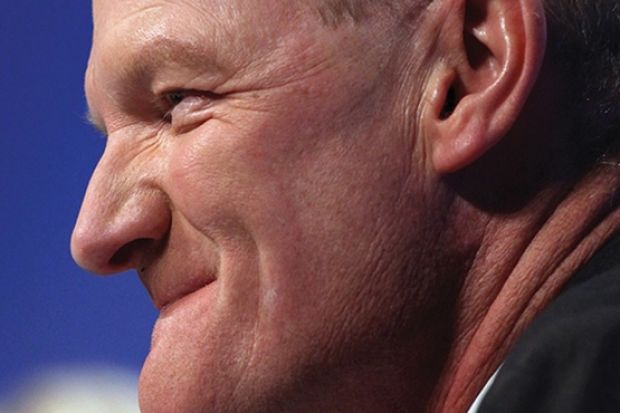The universities and science minister also called on institutions to increase contact hours for students when he spoke today at a London conference organised by the Higher Education Policy Institute and the Higher Education Academy.
Mr Willetts told the conference that Bahram Bekhradnia, Hepi’s director, had “cornered the market in regular media comment on the so-called RAB [Resource Accounting and Budgeting] charge, the amount of our student loans we forecast we will have to write off”.
He added: “These estimates are changing all the time – at least twice a year. This is because they are very sensitive to changes in earnings.”
When Mr Willetts appeared before MPs at the Business Innovation and Skills select committee in January, he said that his department’s estimate of the proportion of loan outlay that would never be repaid was 34 per cent – up from an initial 32 per cent.
In today’s speech, he said the RAB charge “is currently about 35 per cent and whilst earnings continue to grow less than forecast in 2010 it could rise further. It will happen not because of any change in the value of going to university but because of the impact of deviations of average earning from that 2010 forecast”.
But Mr Willetts added that if his department were charged by the Treasury a rate for financing the loans that was closer to the true cost of borrowing, it could “knock ten percentage points off the RAB charge straightaway”.
Hepi has previously warned that increases in the RAB charge, which in turn increase the deficit, would require the Department for Business Innovation and Skills to find savings elsewhere in the higher education budget.
London Economics, which was commissioned by BIS to carry out estimates on the economic returns to higher education qualifications at the time of the government’s White Paper in 2011, estimates that the cost of each percentage point increase in the RAB charge on student loans is £109 million. It estimates that the RAB charge on the new loans is actually 39.6 per cent.
A Hepi survey published today found that satisfaction levels among students dropped in 2012. Speaking to reporters after his speech, Mr Willetts said: “I do think there are universities that need to do more to increase contact hours, and need to do more to increase the quality of the engagement in those contact hours.”
Increased provision of data to students under the new system will “shine a spotlight on that and universities will be under pressure to raise their game”, he added.




